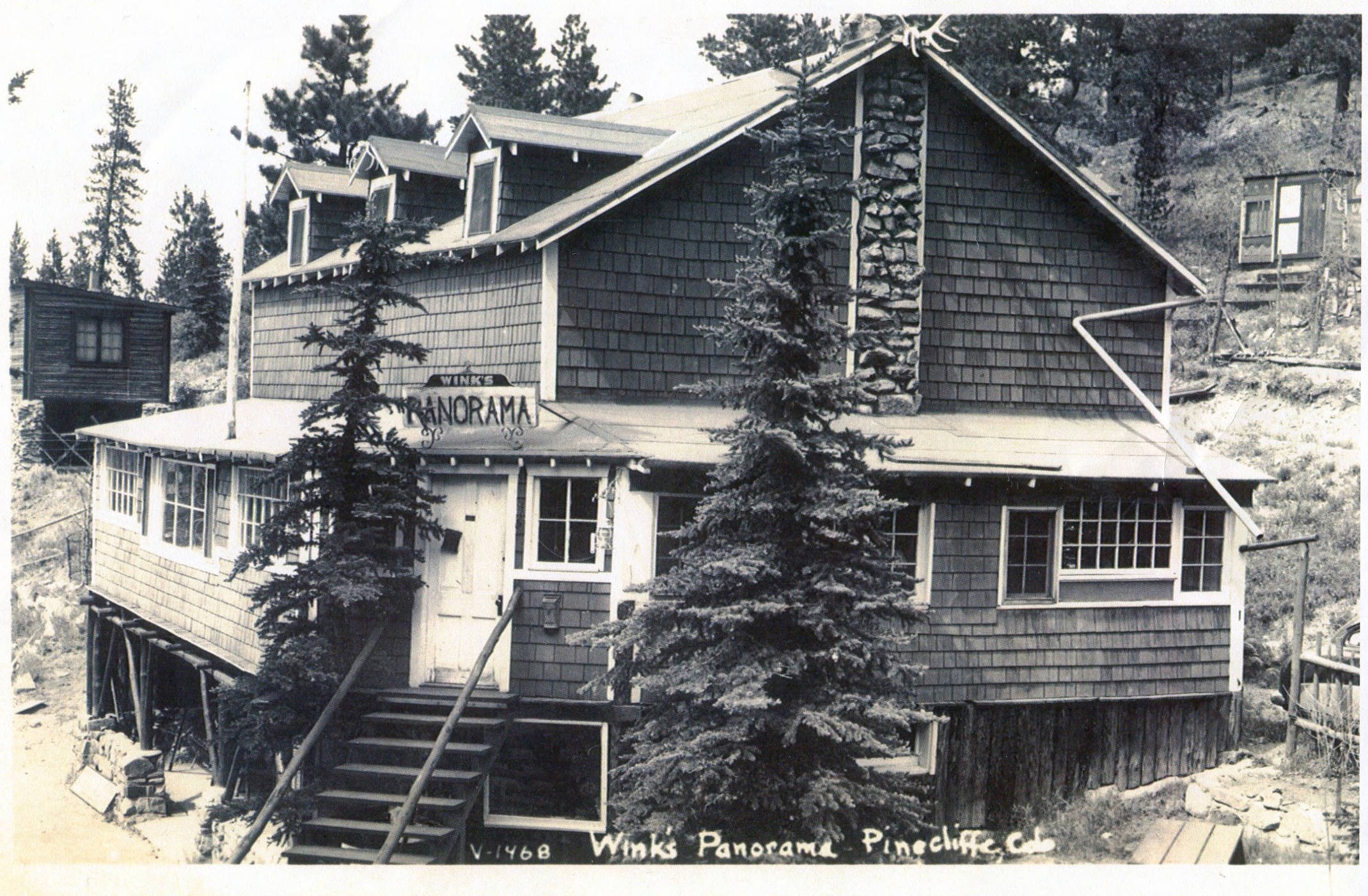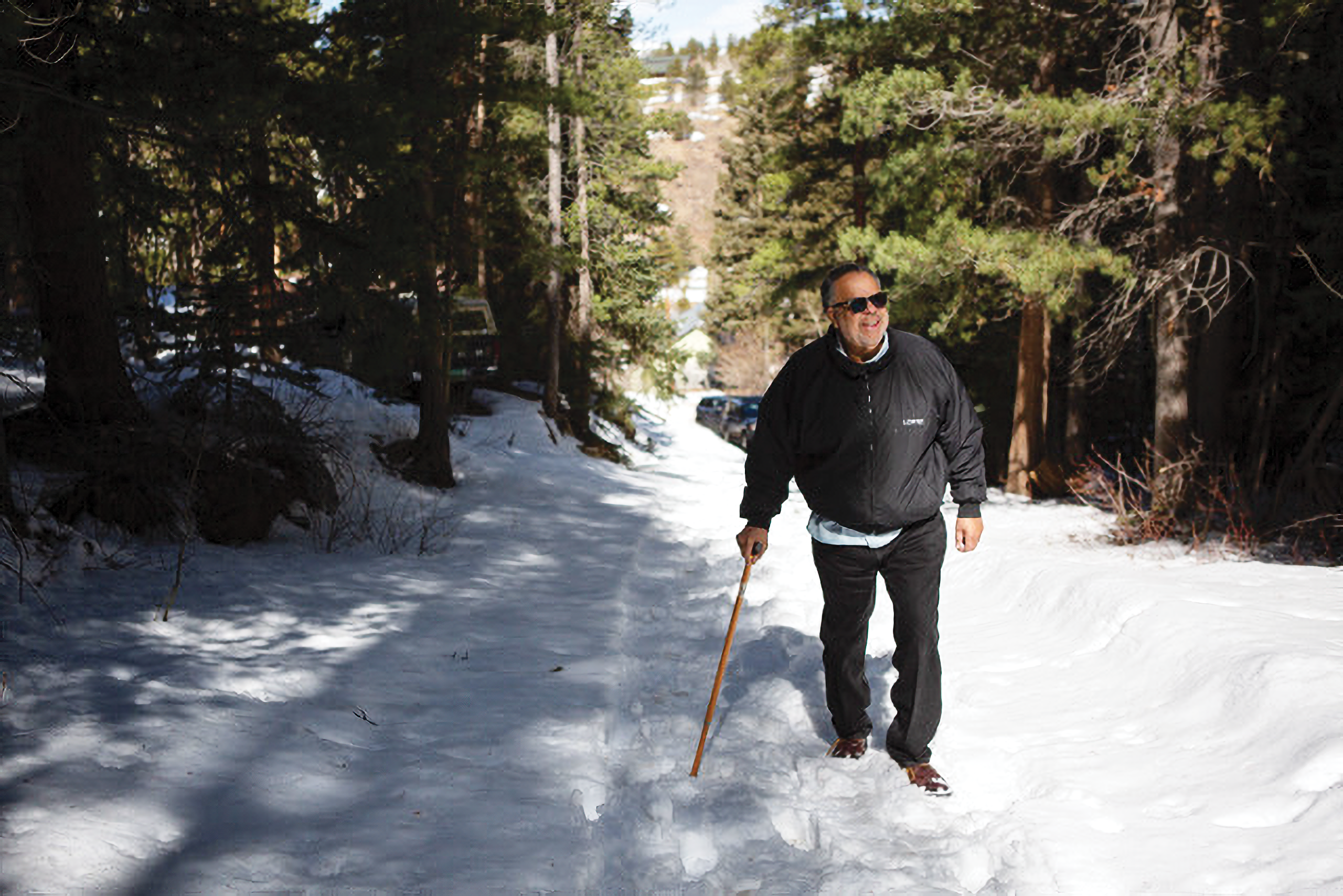
Story
Winks Panorama Lodge
A family history of Colorado’s new National Historic Landmark.
On December 13, 2023, US Secretary of Interior Deb Haaland signed the documents designating Winks Panorama Lodge, the crown jewel of Lincoln Hills, a National Historic Landmark. In announcing the designation, the Department of Interior explained that the “designation reflects the importance of the site in sharing America’s rich history and extraordinary natural features.” Chuck Sams, director of the National Park Service, which administers the National Historic Landmark program, added that the new recognition of the site’s significance in American history will “further illustrate and expand our country’s collective heritage and splendor.”
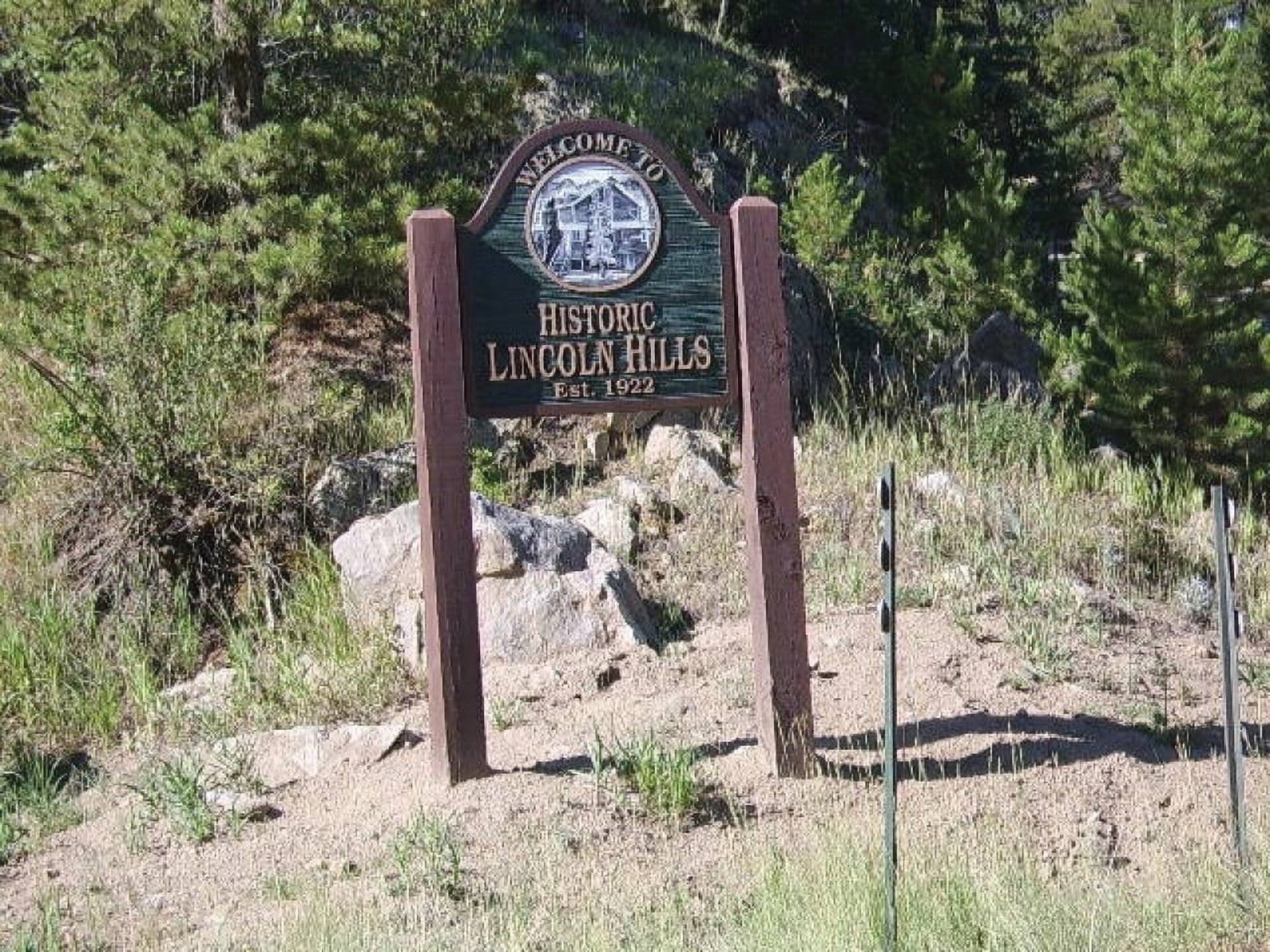
A posted sign at the section of South Beaver Creek Road and Pactolus Lake Road welcoming people to Lincoln Hills.
The designation of Winks Panorama Lodge is like a dream come true for me and members of my family. We have been traveling the winding roads of Coal Creek Canyon on a weekly basis from Memorial Day to Labor Day since I was a little boy. My mother, Nancelia Scott Jackson, has been making the round trip to our family cabin in Lincoln Hills, one mile up the road from Winks Panorama Lodge, since my grandfather built our family cabin in 1926 when she was two years old. The designation is significant because Lincoln Hills—which stands as a testament to the courage and perseverance of Black families who resisted racist oppression by creating a recreational place of their own in the Colorado mountains—is an important and often overlooked part of the American Black experience. The story of Winks Panorama Lodge is one of joy and ingenuity. While much of the Black experience during the Jim Crow era was painful and often deadly, Winks Panorama Lodge was a Black oasis in a welcoming Gilpin County, Colorado.
Creating Lincoln Hills
Lincoln Hills was a mountain resort and Black safe haven created in 1922 by two developers, E.C. Regnier and Roger Ewalt. Through their corporation, the Lincoln Hills Country Club Development, they purchased more than 100 acres of property and subdivided it into approximately 1700 lots to create a mountain resort and cabin ownership opportunity for African Americans. Lincoln Hills sits forty miles west of Denver, situated between the towns of Pinecliffe and Nederland. Winks Panorama, which included a six-bedroom lodge, Winks Tavern, and ten freestanding cabins, was built by Obrey “Winks” Wendell Hamlet and opened for business in 1928. It was the central gathering point at Lincoln Hills and hosted some of the great luminaries of the day such as Duke Ellington, Count Basie, Lena Horne, Langston Hughes, Zora Neale Hurston, and Whitney Young.
Black people came to Lincoln Hills from all regions of the nation. The 1700 lots were for sale for between fifty and one hundred dollars each. Two of Denver’s Black Churches, Zion Baptist and Shorter Community AME, were prime promoters to their parishioners to buy lots and would have gatherings in Lincoln Hills for their congregations on holidays. Those who did not travel by car would arrive by train (“The Dinky”), which had a stop right after the bridge crossing on South Beaver Creek Road for passengers to embark or exit. Lincoln Hills became the epicenter of Black recreation in the West during segregation and it was the only one of its kind west of the Mississippi River from 1922 to 1965.
Lincoln Hills was also home to a camp of the Phillis Wheatley branch of the YWCA called Camp Nizhoni, after a Diné word for “beautiful.” Created as a response to Jim Crow laws and segregationist policies that barred Black girls from attending white camps, its administration building and bunk house offered Black girls outdoor recreational opportunities from 1925 to 1945. My mother, Nancelia Scott Jackson, was fifteen years old in 1939 when she rode the Dinky train to Lincoln Hills for a week at camp. While there she made daily entries in her diary on the joy of spending a week camping with Black girls from across the nation. Starting in 2023 and running through most of 2025, that diary was on exhibit at the Museum of Boulder in the exhibition Proclaiming Colorado’s Black History, 1840s–Today.
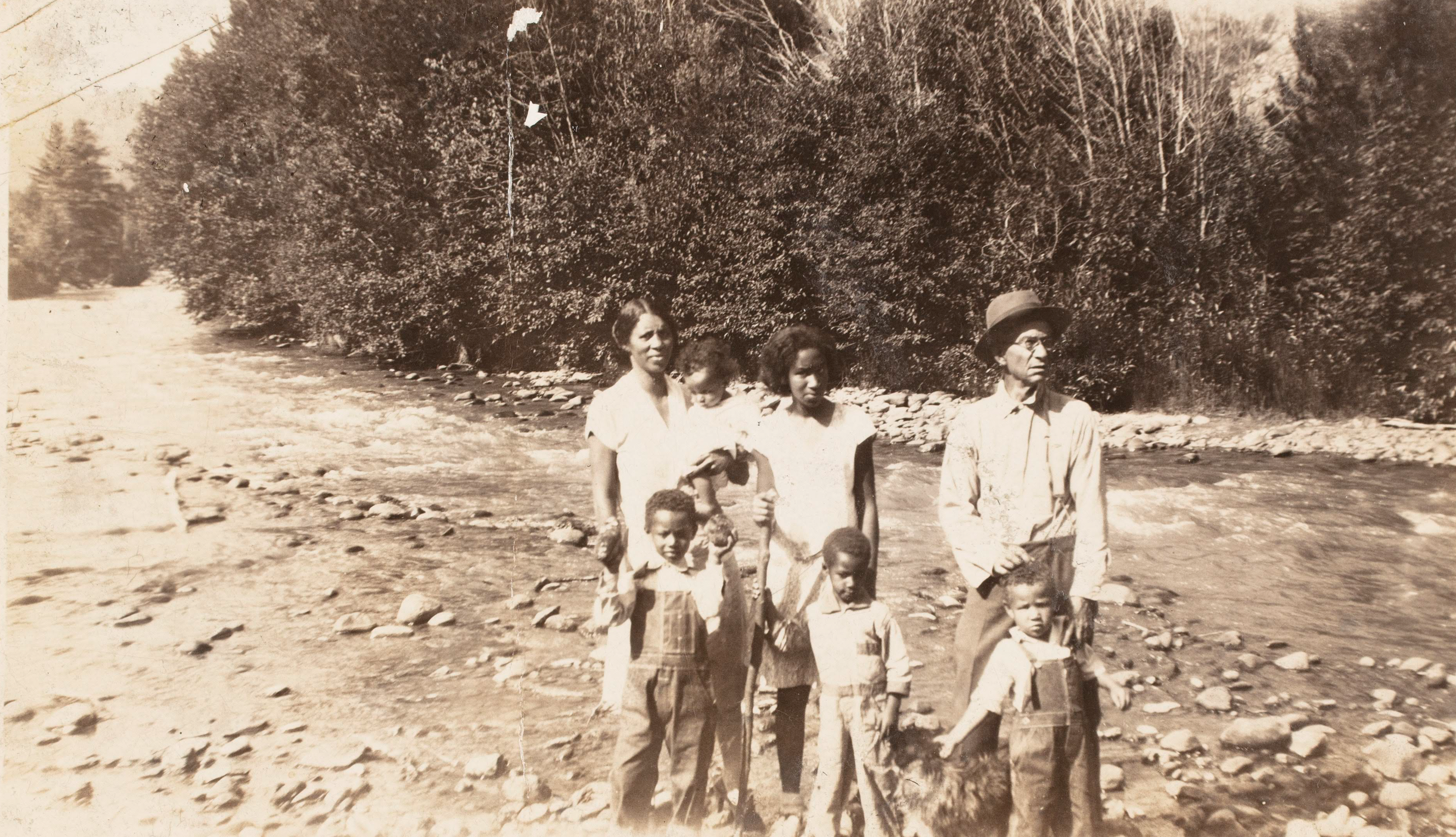
Great Grandpa William Pitts, back row far right, with his family in South Boulder Creek.
Lincoln Hills and Winks Panorama thrived until 1965, despite the Ku Klux Klan’s efforts in Colorado and throughout the nation, the economic hardships of the Great Depression, the degrading intent of racist Jim Crow policies, and the racial discrimination that was part of everyday life in America. Because Lincoln Hills was described in publications such as The Negro Motorist Green Book, which cataloged safe destinations for Black travellers throughout the country, as well as Black national newspapers, and Black magazines like Ebony and Jet, it became known for its independence, self-reliance, and safe haven for Black people.
A flier from those days proclaimed it “Lincoln Hills: The Beautiful,” and painted one of the best pictures of the place in words: “Nestled within the grandeur of the everlasting hills, bathed in perpetual sunshine and fragrant with the odors of wildflowers and the health-giving pine forests, we are building a place that will attract thousands of people and at the same time show our genius and constructive ability.”
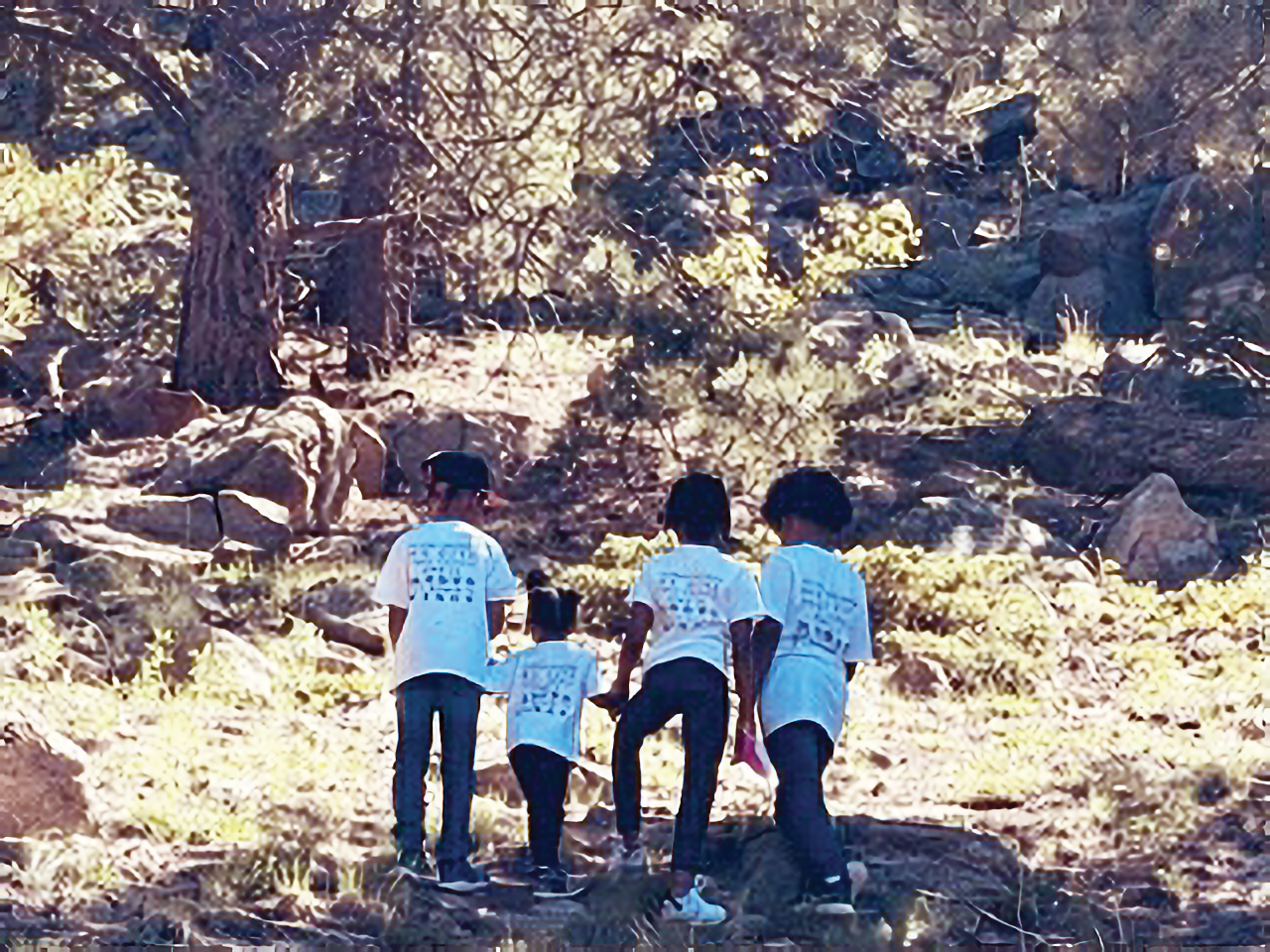
A family tradition to hike to the top; family members between four and eighty have made the climb and observed the vista.
The lure of this idyllic scene attracted Black families from Colorado and throughout the country to purchase lots at Lincoln Hills, and the community thrived for decades, all the while with Winks Panorama at its center.
But in 1965, Winks Hamlet died and his wife, Melba Hamlet, decided to sell the Panorama. The sale was an acknowledgement that the year-round upkeep was too much for one person, but also that with the passage of Civil Rights legislation, Black families had new opportunities to seek out recreation in mountain communities throughout Colorado where they had previously been unwelcome. The property was sold several more times over the ensuing decades, and while our family continued to visit our cabin regularly, Winks Panorama was no longer the vibrant heart of Lincoln Hills.
Black Utopia of the West
Like my mother, I’ve been going to Lincoln Hills all my life, spending summer weekends with family at the cabin my great grandfather built. But I was twenty when Melba Hamlet sold Winks Panorama, too young to have joined my relatives when they went over to Winks Tavern for a drink during our visits. I did not start visiting Winks Panorama until 2007, when I was selected to be a member of the James P. Beckwourth Mountain Club board.
James Beckwourth, a formerly enslaved man, became an American fur trapper, western trailblazer, and scout for the Army cavalry. Among his many lasting contributions to history, he was one of the founders of Pueblo, Colorado. The club named in his honor was a group of urban people of color who gathered to recreate in the Colorado mountains. In addition, they provided education to children about natural resources and Black achievements in Colorado. The club purchased Winks Panorama with a Colorado Historical Foundation Grant and served as stewards of the lodge from 2007 to 2012, engaging in restoration work, historical reenactment events, tours with History Colorado members, and community engagements with Gilpin County residents and officials. For the members of the club, those gatherings at the Panorama were reminiscent of the glory days of Winks Panorama when it was the Black utopia of the West.
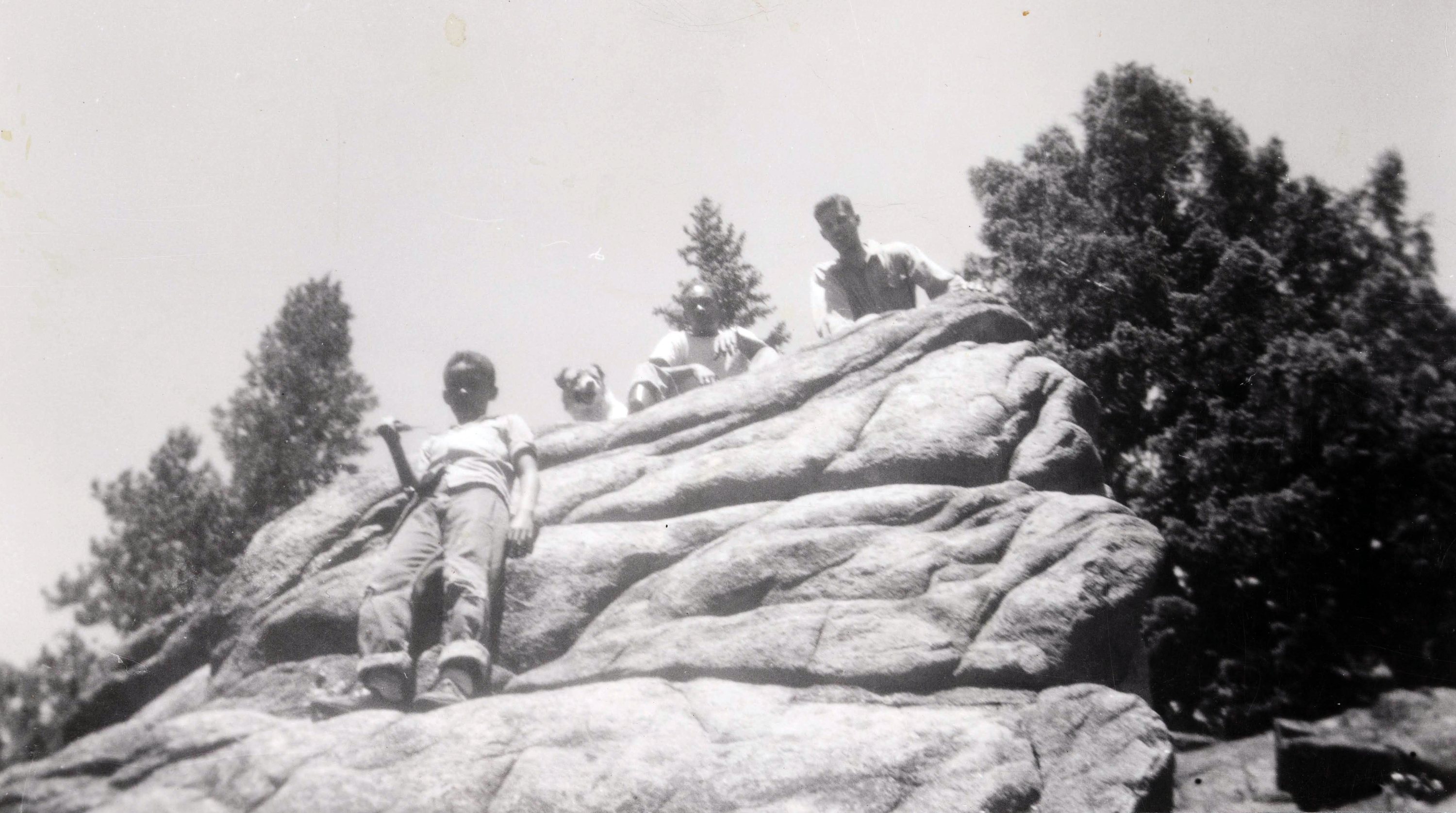
Uncle Art Scott, my Dad, Floyd M. Jackson and Uncle John Scott with family dog.
The club sold Winks Panorama to Robert Smith in 2012. Smith, a lifelong Coloradan and Lincoln Hills Cares Foundation cofounder, is a businessman and philanthropist who has invested his time and resources in organizations that preserve Black culture and history throughout the United States. The foundation, under the leadership of Dr. Jeanette Patterson, is working to honor the past of Lincoln Hills. According to the foundation, since 2016 it has reached more than 103,000 youth, facilitated more than 10,000 hours of curriculum instruction and partnered with more than seventy-five organizations. Equally important is its on-going restoration of the Camp Nizhoni structures and Winks Panorama and Tavern.
The designation of Lincoln Hills’ lodge as a federal historic landmark is the culmination of an American Black history story of perseverance and survival against all odds. This designation is an American dream come true for my great grandfather, William Pitts, who came to Colorado in 1919. The son of an enslaved woman and a slave master in Missouri, he learned to read and write and became a skilled carpenter. Pitts built his family cabin on the northern border of Lincoln Hills, thus becoming the gateway cabin into Lincoln Hills. Our family later named it the Zephyr View cabin because of the passenger train that traverses the canyon on its way to and from California. In 2020 the Gilpin County Historic Preservation Commission issued a report that traced the history of Lincoln Hills in the process of evaluating the landmark status of Zephyr View. That history places the Pitts/Scott/Jackson family in the middle of the narrative of Black history in Gilpin County and the West, and the Zephyr View cabin was designated a historic building by Gilpin County on November 17, 2020.
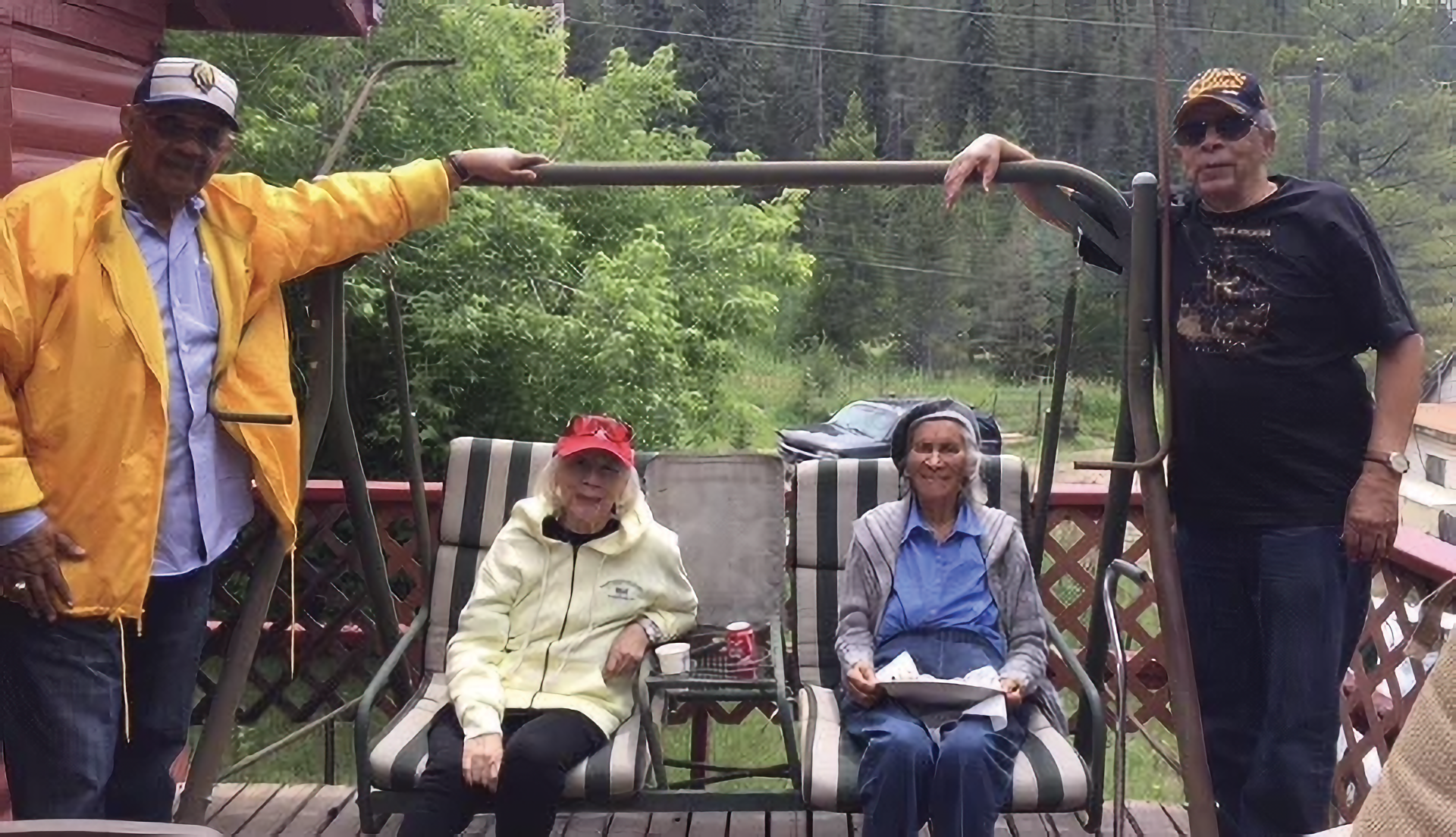
Right to left: Warren Scott, 91; Cousin Geraldine Morgan, 104; Nancelia Scott, Jackson, 99; and Art Scott, 85 on deck at Zephyr View cabin.
The historic designation of our family cabin was a precursor to the federal recognition of adding Winks Panorama to the National Register of Historic Places last year. Both designations underscore the significance of Black mobility, leisure, and resistance in spite of the systemic oppression that occurred during the period of Jim Crow laws, KKK threats, and segregation. Winks Panorama demonstrates that in the face of this racism, and due to the ingenuity and courage of Obrey Wendell “Winks” Hamlet, Winks Panorama prevailed, and his efforts are now nationally recognized.
I believe that Dr. Martin Luther King, Jr. is smiling because of this designation. In his famous I Have a Dream speech, Dr. King spoke of the mountains of the Colorado Rockies. “Let freedom ring from the snow-capped Rockies of Colorado… Let freedom ring from every hill and molehill of Mississippi and every mountainside.” Dr King loved invoking Colorado and his speech speaks to the mountains that Black people have to climb, enduring pain and difficulty in order to reach a glorious summit. That summit is Winks Panorama.

